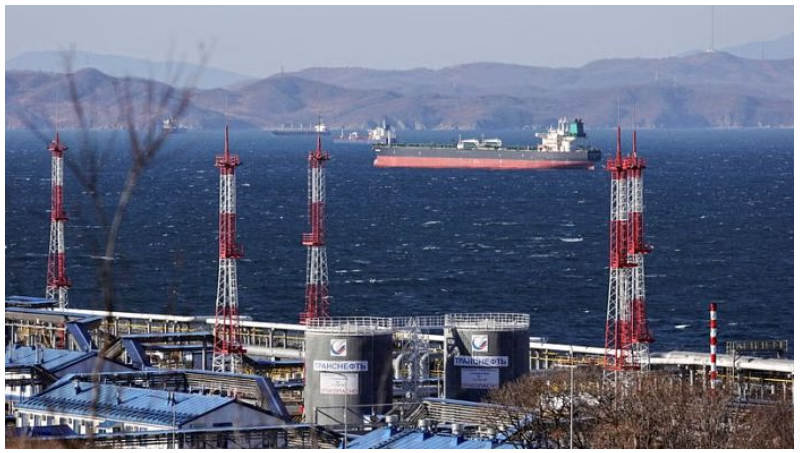If India stopped buying Russian oil, China would gain and global prices would go up
Gopal Krishna Agarwal,
The West should thank India for buying Russian oil and stabilising the global market.
India imports around 85-90 per cent of its crude oil requirements. Its crude import bill was approximately $132-140 billion for FY 2023-24. It is evident that even a minor change in the price of crude can have a large overall effect on the balance of payment position. India does not have the luxury of printing dollars. It must always take steps based on the best interests of its 1.4 billion citizens.
In 2022, the world was on the brink of an oil shock after the Russia-Ukraine war. Panic hit the oil markets and crude prices soared to $137 per barrel. The West had two choices — ban Russian oil completely and let the prices explode or find other ways to keep the market functioning. The G7, therefore, introduced a price cap — $60 per barrel — to keep the supply flowing. Any country could buy Russian crude legally as long as it was below that price.
Before the war, Russian crude oil import was negligible for India, just 0.2 per cent of imports. In 2024-25, 36-40 per cent of our oil came from Russia. And it was vital for stabilising global oil prices. The US publicly supported India’s move. In 2022, US Treasury Secretary Janet Yellen said, “We’re happy for India to buy as much Russian oil as it wants… even above the cap…” Former US Ambassador Eric Garcetti said that the US wanted someone to buy Russian oil at the cap.
Russia’s crude production in 2024-25 averaged around 10.45 million barrels per day (bpd), which is about 10 per cent of global supplies. Of this, 4.2-4.5 million bpd was exported. Currently, oil demand and supply are fairly balanced. However, in case Russian supplies were disrupted, crude prices would go up by $10-15 per barrel. The oil market has seen such volatility every time there was talk of Russian flow disruption due to sanctions.
India’s balancing role
India has always respected global compulsions. But, strategically, India’s energy security is also linked to regional geopolitics. In 2007, Iran supplied 12 per cent of our crude. After being sanctioned over its nuclear programme, India stopped buying from Iran. Meanwhile, China still buys 1.4 million bpd from Iran despite sanctions. Between 2022 and 2025, more than 40 per cent of Russia’s crude exports went to China. And if India stopped buying crude from Russia, Moscow would sell more oil to China at bigger discounts. The net result would be that China will be at a greater advantage and global crude prices will go up.
In this global turmoil driven by protectionism and trade and tariff wars, India is treading its path carefully, balancing regional and global geopolitics with resilience. The Indian government’s prudent policy decisions are being appreciated across the globe and bringing positive results. Recently, S&P Global has also raised India’s long-term sovereign credit rating to ‘BBB’ from ‘BBB-‘, with short-term rating upgraded to ‘A-2’ from ‘A-3’. The stable outlook reflects confidence in India’s strong economic fundamentals, prudent policy management, and effective monetary policy — a recognition of India’s growing financial resilience.
The successful handling of the economy by the Narendra Modi government has imparted resilience to the economy, ensuring it can bear economic shocks. We are the fastest-growing major economy, our fiscal position is improving, and there is increasing efficiency in government spending. All these means India will be able to negotiate as a partner and won’t be a pushover.
India’s imports of Russian crude oil averaged 1.7–2 million bpd in 2024-25, accounting for 36-40 per cent of its total crude imports. The average discount on Russian crude was approximately $3.5 per barrel, compared to Middle Eastern crude, which was costlier by about $4-5 per barrel. This translated into estimated savings of $7-10 billion on India’s import bill, including $2.3-3.8 billion (Rs 19,000-31,500 crore) in direct savings from lower prices compared to alternative suppliers. In addition, India avoided a potential $9-11 billion increase in its import bill by helping stabilise global supply and preventing price spikes.
If India stopped buying Russian oil, it would be forced to compete in crowded West Asian markets, likely causing a sharp rise in global crude prices. By importing Russian oil, India is not just reducing its own costs but also helping to balance the global oil market.
Gopal Krishna Agarwal is the National Spokesperson of BJP.



